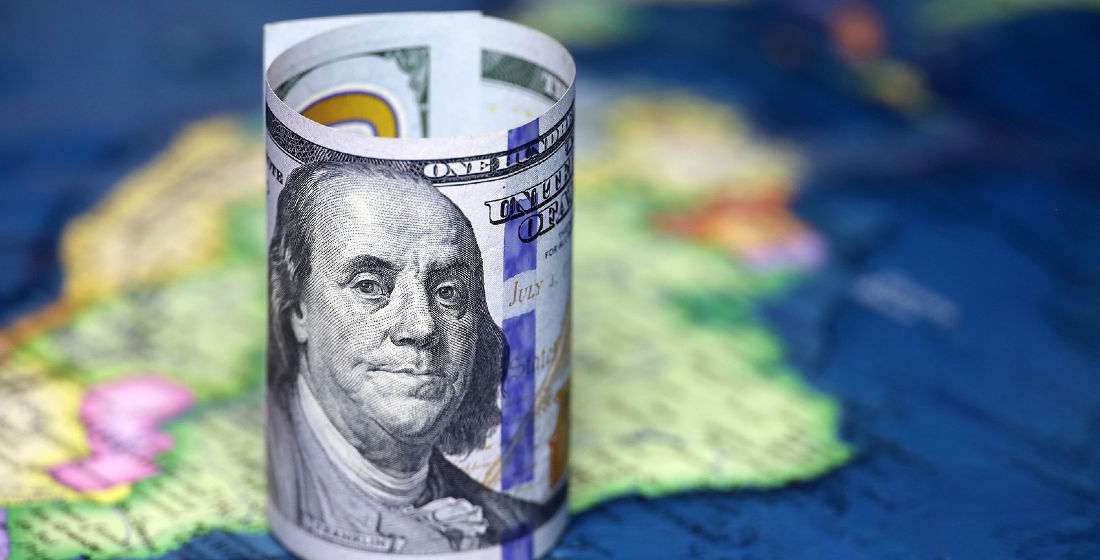Debt-for-nature swaps: Because the environment is worth it
Debt-for-nature swaps are growing in volume and frequency, and could play a significant part in delivering the COP15 biodiversity framework – if more IMF data were available.

Debt-for-nature swaps have existed in one form or another since the late 1980s, but early deals resembled grants much more than their modern counterparts. Nowadays, the norm is becoming debt refinancing linked to conservation KPIs – private creditors allow expensive bonds and loans to be written down and replaced with cheaper financing via a mix of private and DFI investment/guarantees. Recent transactions have channelled conservation financing to coral reefs, wide stretches of biodiverse coastline, and soon to the Galapagos Islands.
Although debt-for-nature swaps are not new, the latest structural evolutions in the sector are generating deals of higher volume and with more frequency than the past: according to AfDB only three of over 140 or so debt-for-nature swaps struck over the past 35 years had a value of more than a quarter of a billion dollars. As Joan M. Larrea, CEO of Convergence Blended Finance, notes of recent examples of debt-for-nature swaps: “I applaud things that are not brilliantly new but just move lots of money into structures that are familiar because we don’t have time to waste.”
Volumes and frequency growing
The deal pipeline is growing. Ecuador is currently in talks with IDB, DFC and Pew Charitable Trusts on an $800 million refinancing on its debt intended to free up savings for conservation efforts. Sri Lanka is also in talks for a $1 billion swap, it revealed at COP27. Both countries’ serial defaulter reputations and the wealth of their biodiverse ecosystems offer ripe opportunities for debt-for-nature swaps – “typically, and this is somewhat ironic, the more distressed the country is, the more attractive it is to do a debt-for-nature swap”, says Esteban Brenes, director at WWFUS Conservation Finance Team.
In October 2022, IDB provided a $150 million guarantee next to a $50 million guarantee from The Nature Conservancy (TNC) to enhance a blue loan for Barbados to repurchase its 2029 notes via a modified Dutch auction and a debt extension with smaller annual payments. Under its Blue Bonds for Ocean Conservation strategy, the $146.5 million dual currency blue loan refinanced a portion of Barbados’ sovereign debt at 200 bps less compared to its 6.5% dollar denominated 2029 Eurobonds and an 8% 2043 locally denominated Series E. The other portion was funded by $73.2 million in blue bonds issued via BB Blue Financing DAC, on-lent to Barbados, and a locally denominated matching $73.2 million loan from CIBC FirstCaribbean.
The transaction is expected to free up $50 million fiscally for conservation – good news for Barbados’s plan to expand marine protected areas from almost 0% to 30% in the next 15 years.
The Barbados deal was arguably an evolution of Belize's 2021 debt-for-nature swap (itself a major volume progression on TNC’s pathfinder $21.6 million Seychelles deal in 2018) which not only directed financing towards the world’s second-largest coral reef, but also reduced its debt level by more than 12% of GDP. The debt previously stood at an unsustainable 125% and the swap led to a credit rating upgrade of CC to B- from S&P.
A TNC subsidiary lent funds to Belize to buy back a $553 million “superbond”, equivalent to 30% of GDP, at a discounted rate of 55 cents per dollar. TNC financed the loan with a $364 million blue bond issuance arranged and underwritten by Credit Suisse and insured by DFC.
The structuring of the Seychelles, Belize and Barbados deals was tailored to the unique circumstances of each country, which raises the issue of whether such swaps are replicable and globally scalable. Gregory Watson, IDB’s Natural Capital Lab lead, says that “following Barbados, the interest from our region has been tremendous and our pipeline of interest is quite large.” Internationally there are plenty of deals on the way, especially in Africa, including in Zambia, Benin, Cape Verde and Kenya.
According to Brenes, transactions have significantly sped up since the Belize deal. “Belize took around three years and in our latest transaction we have been negotiating for maybe nine months – my estimate is that it will take another year to get it done”. Alongside deals getting faster, the essential components of building capacity, awareness and data are also becoming smoother.
Beginning conversations depends on governments and their debt advisors understanding the transaction is an additional benefit to a debt refinancing, not a further complication hindering financing getting finalised. And awareness is improving says Brenes: “We are being approached now by a couple of countries who understand that this an enhancement to a debt refinancing.”
Once a conversation has begun, the next hurdle is tackling the inherent coordination challenge between the relative administrative institutions. Watson explains that it is important to “harmonize a certain technical language to facilitate understanding”. Brenes adds, “we are getting a little bit better at financial planning and estimating the gaps of conservation in countries”, and says that these numbers serve as a vital translator for the ministries, and for the creditors.
One area where improvement is necessary, argues Brenes, is filling the data gap at the IMF. The annual IMF debt sustainability report identifies member states’ vulnerability to sovereign debt; it “pretty much tells us how much of a country’s debt could be refinanced or swapped and what a given country needs to be doing in order to keep paying it back”. As such, debt refinancings and debt-for-nature swaps start at and are dependent on the IMF’s analysis.
Quantifying conservation gaps and calculating the long-term cost benefit analysis of installing climate mitigation, adaptation and conservation infrastructure shows governments how much money will be saved in the long run by acting sooner rather than later. According to Brenes, this is where the IMF falls short: “The data is not there and they can only do what is in the books – we need to solve that equation as well.”
The importance of impact
The IMF has suggested transactions could be made faster by structuring deals around broad climate goals, like reducing emissions or protecting nature, and linking swaps to simple-to-measure metrics like monitoring emissions. But simplifying these processes could detract from the intensity of detailed and specific conservation efforts, potentially diluting KPIs and investor certainty and ultimately appetite.
Part of the role of MDBs, and why their partnerships with NGOs are proving so effective, entails engaging with local governance on the environmental side, in the interest of both “meeting the conservation commitments but also making sure that we are having a real conservation and restoration impact on the ground and not just greenwashing”, says Watson.
Ensuring that KPIs can be met necessitates MDBs and DFIs engaging with domestic public policy. Impacts become longer-term this way; savings are kept and invested in a fiscally sustainable way with the addition of positive policy change.
Future transactions could even be frontloaded with policy in mind. Watson proposes mapping conservation goals against existing plans such as NDCs, biodiversity strategies and long-term action plans. Starting transactions this way would ensure “better impact across multiple sectors – when you pick a project based on one set of criteria, you may be leaving another set of benefits at the table”.
Brenes concurs, stating that part of the challenge is “changing the mindset of government officials. They are so underfunded and used to managing scarcity, not budgets. We try to tell them to think blue sky, no limits, and then we’ll figure out how to get the money.”
The Uxolo perspective
Successful debt-for-nature swaps are good news amidst a burgeoning global debt crisis augmented by the Covid-19 pandemic and 2022’s meta-crisis of inflation and supply chain breakdowns. That is not to say they represent a cure-all – as Joan Oriol Prats Cabrera, lead financial specialist at IDB, says, “debt for nature swaps’ primary purpose is not to resolve debt distress” – but they are proving to be an effective way to combine the twin challenges of debt and conservation struggles.
COP15 recently concluded with a landmark biodiversity framework, adopting a plan that includes concrete measures to halt and reverse nature loss, including putting 30% of the planet and 30% of degraded ecosystems under protection by 2030. Debt refinancing could take a significant spot in turning the framework into reality: in 2023, this could mean transactions looking to tackle deforestation in Benin’s Riparian forests, poaching in Zambia, the defence of sea turtles in Cape Verde and the increasing of protected areas in Kenya – and that is just in Africa.
But much depends on having governments with conservation programmes in place and debt situations where debt-for-nature swaps are going to be efficient. That conversation begins with the IMF.





